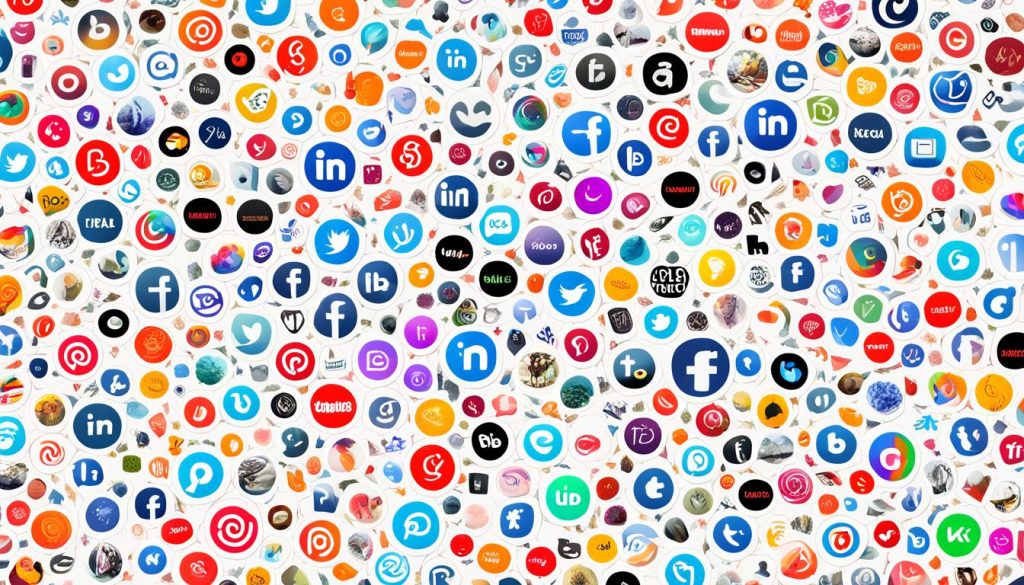The realm of social media is buzzing with opportunities for the creatively inclined. With a swift evolution of platforms that pay content creators, burgeoning to accommodate and reward the generation of engaging content, the digital landscape serves as fertile ground for innovative minds. Recognizing the potential for profit within these bustling networks, monetization platforms for content creators are transforming the hustle into a viable career path. Whether you are a seasoned influencer or an emerging talent, navigating content monetization platforms is key to unlocking a sustainable income.
Key Takeaways
- Discover which platforms that pay content creators match your niche and audience.
- Understand the various tools and features offered by monetization platforms for content creators.
- Learn how to maximize your earnings potential on each platform.
- Stay informed about the latest trends and updates in content monetization platforms.
- Recognize the benefit of diversifying your content to cater to different platforms.
- Develop strategies to engage and grow your audience, enhancing monetization opportunities.
Understanding the Social Media Landscape for Content Creators
The digital realm is a battleground for the attention of creative minds, with entities like Instagram, TikTok, and YouTube vying to become the leading earning platforms for creators. Staying ahead in this dynamic domain means adapting to the evolving needs of inventive individuals who desire not just a stage for their content but also viable content creator payment platforms.
Platforms Competing for Creator Attention
The fierce competition among various platforms with revenue sharing for creators has given rise to innovative approaches for drawing in vibrant content creators. These digital arenas offer unique resources, audience reach, and engagement tools that are instrumental in helping creators turn their passion into paychecks.
Major Players in Influencer Marketing: Instagram, TikTok, YouTube
At the forefront of this influencer marketing evolution stand Instagram with its emphasis on brand partnerships, TikTok with its command over trends and virality, and YouTube’s stronghold on content longevity and advertiser relationships. Each platform bolsters the ecosystem, contributing to a robust creator payout platform array.
Monetization Methods: Evolving and Diversifying
As the drive for economic viability intensifies, content creators find solace in the myriad of monetization methods that these platforms constantly refine. From sponsored content to ad revenue streams, the digital marketplace is abundant with pathways for financial growth, encouraging creators to pursue their digital aspirations with zest and determination.
| Platform | Monetization Feature | Type of Revenue Sharing | Perks for Creators |
|---|---|---|---|
| Brand Collabs Manager | Brand Partnerships | High Engagement, Authenticity | |
| TikTok | Creator Fund, Creative Challenge | User-Generated Content | Virality, Creativity |
| YouTube | YouTube Partner Program | Ad Revenue | Long-term Monetization, Large Audience Base |
The Rise of Brand Collaborations and How They Pay
The domain of digital content creation is witnessing a burgeoning trend where pay-per-click platforms for creators and platforms offering revenue sharing for creators are becoming increasingly significant. Snap Inc.’s innovative agency program for Snapchat, and TikTok’s discreet Creative Challenge, are prime examples of this shift. By streamlining the process of brand collaborations, these platforms are giving rise to new opportunities for creators to monetize their influence.

In recent times, direct deals between brands and social media influencers have outshone the traditional platform marketplace offerings. Creators are now turning to specialized agencies and programs that help them negotiate more lucrative deals with brands, indicating a notable preference for personalized and direct collaboration over mass-market approaches.
Let’s delve into a comparative look at some of the platforms known for facilitating brand collaborations:
| Platform | Type of Collaboration | Notable Feature | Benefit for Creators |
|---|---|---|---|
| Snapchat | Agency program | Specialized deal facilitation | Higher earnings through tailored campaigns |
| TikTok | Creative Challenge | Matchmaking with brand campaigns | Reduced operational friction and increased creative freedom |
| Brand partnerships | In-app collaboration tools | Ease of content distribution and audience engagement | |
| YouTube | Ad revenue sharing | Monetization of video content | Stable income based on viewership |
The power of these collaborations not only provides a monetary boost for creators but also encourages the production of high-quality, brand-aligned content. This revenue-sharing model, spearheaded by platforms like YouTube, has laid a cornerstone for others to follow, ensuring creators get their fair share of the pie, not merely through incidental clicks but through meaningful engagements and sustained partnerships.
As the creator economy evolves, so too does the landscape of monetization. The shift towards direct brand collaborations and specialized agency assistance is disrupting traditional revenue models and paving the way for a more empowered, financially independent creator class.
It is evident that the essence of monetization in content creation lies in the capacity of platforms to provide creators with not just visibility, but viable earning potential through innovative partnerships and revenue-sharing models. As these platforms continue to adapt and reinvent the creator-economy dynamics, we enter a new era where creativity is appropriately valued and monetarily rewarded.
Platforms That Pay Content Creators: Exploring Creator Funds
As the digital content landscape continues to expand, paid platforms for content creators have emerged as a cornerstone of the creator economy. These platforms have innovated various models of creator funds designed to monetize creativity and engagement. Among these models, one recurring theme is the reliance on social media performance metrics, which directly influence the incomes of digital artists, videographers, and influencers.

Creator Fund Models Across Different Platforms
Instagram, TikTok, and Snapchat each offer distinct versions of creator funds, prioritizing different aspects of content engagement. These funds are essentially designed to support and encourage creators to produce more compelling, original content by offering financial incentives. Below, we summarize the structure of these funds and the unique features that distinguish each platform’s approach.
| Platform | Type of Content | Payment Triggers | Sustainability Notes |
|---|---|---|---|
| Photo, Video, Reels | Engagement, Reach, Originality | High competition, selective contracts | |
| TikTok | Short-form Video | Views, Virality | Payouts vary, high potential for virality |
| Snapchat | Snaps, Stories | Engagement, Creative Use of Features | Curated content has better payout opportunities |
TikTok’s Response to Creator Feedback
After significant feedback from their creative community, TikTok has initiated changes to their creator fund. Their commitment to developing a more equitable payout structure signals platforms’ growing recognition of the value that creators bring to the ecosystem. TikTok’s response includes refining the fund distribution algorithm and enhancing opportunities for creators to monetize a wide array of content.
The Impact of Social Media Metrics on Payouts
The metrics that underpin the payout systems on platforms that pay content creators are critical. Views, likes, comments, and shares are not just vanity metrics; they form the basis of a modern digital currency that translates directly into income for creators. Understanding these metrics is essential for creators maneuvering through the competitive but rewarding landscape of social media.
Platforms continue to evolve these models, striking a balance between incentivizing high-quality content and managing the scale of payouts. As the creator economy grows, these platforms need to ensure their funds remain accessible and impactful for those fueling the content revolution.
Ad Revenue Sharing and Its Sustainability for Creators
With the digital ecosystem growing more robust by the day, content monetization platforms continue to innovate, presenting ample opportunities for creators to establish a steady stream of income. Among these, ad revenue sharing is not just a flash in the pan; it’s a consistent and dependable form of revenue for digital content producers. YouTube has long been the gold standard in this arena, offering a cut of ad revenue to its creators, thereby underscoring its commitment to those who create engaging, long-form content. This system has established a blueprint for sustainable creator compensation.
Reflecting on the competitive landscape of creator payout platforms, we see Meta’s actionable response with the introduction of its Reels program on Facebook. This initiative caters to the short-form content creators, proposing a performance-based payout model that aims to boost creative output and reward creators based on the actual success of their content. While the structure may differ from that of YouTube, it signifies Meta’s recognition of the imperative to provide content creators with sustainable and equitable revenue streams.
The table below illustrates the key differences between YouTube and Facebook’s ad revenue sharing structures:
| Platform | Type of Content | Revenue Model | Revenue Share | Payout Threshold |
|---|---|---|---|---|
| YouTube | Long-form videos | Ad Impressions & Clicks | 55% Creator / 45% YouTube | $100 |
| Facebook (Reels) | Short-form videos | Performance-based | Varies by Performance | No Minimum |
The shift towards such monetization strategies highlights a keen responsiveness within content monetization platforms to align with the evolving needs of content creators. It’s a clear move towards nurturing a sustainable economy for creators who are the bedrock of these social networks. As the landscape continues to evolve, the onus lies on creators to leverage these revenue-sharing models most effectively, while platforms must ensure these models remain attractive and fair to retain their top creative talent.
Additional Income Streams: Merchandise, Affiliates, and More
As the landscape of digital content creation evolves, savvy content creators are tapping into various monetization platforms for content creators to amplify their earnings. The realm of social commerce, affiliate opportunities, and direct audience support are becoming increasingly integral parts of a diverse income portfolio, providing stability and growth potential beyond traditional revenue streams.
Emergence of Social Commerce
With platforms like TikTok and YouTube promoting products directly through their interfaces, the lines between entertainment and e-commerce are blurring. Social commerce not only increases the viability of platforms with revenue sharing for creators but also adds an authentic touch to product promotion, as creators endorse items they’re passionate about.
The Role of Affiliate Marketing in Social Media
Instagram’s changing approach to affiliate marketing is reshaping how creators can leverage their influence. Affiliate links allow followers to purchase recommended products, generating commission for the creator—a clear testament to the symbiotic relationship between creators and brands in the social media ecosystem.
Diversify Your Income: Tips and Subscriptions
Subscription-based models on Twitch, OnlyFans, and Patreon provide creators with a steady income, reflective of the direct support from their audience. Such platforms exemplify how monetization platforms for content creators can cultivate a dedicated community through exclusive content and interactions.
| Platform | Monetization Method | Notable Feature |
|---|---|---|
| TikTok | Sales of Personalized Merchandise | Integrated E-Commerce Functionality |
| YouTube | Affiliate Marketing | Product Shelf for Merchandise Promotion |
| Affiliate Marketing | Seamless In-App Shopping Experience | |
| Twitch | Subscriptions & Tips | Recurring Support from Viewers |
| OnlyFans/Patreon | Subscription-Based Content | Exclusive Access to Creators |
In every instance, these monetization platforms enable content creators to branch out, ensuring that they have the freedom and flexibility to maximize their revenue and truly capitalize on their craft.
Conclusion
In the vast and vibrant world of social media, content creators have access to an ever-growing selection of monetization platforms for creators. These platforms that pay content creators offer an assortment of methods to earn revenue, from dynamic brand collaborations and ad revenue sharing to the fostering of community through tips and subscriptions. With the online terrain constantly shifting, the agility to adapt and utilize these earning platforms for creators is crucial for those looking to thrive in the creator economy.
The digital landscape’s ever-intensifying competition propels these content creator payment platforms to continually innovate, thereby expanding the horizons for creatives in pursuit of financial growth and stability. The key to capitalizing on this burgeoning economic opportunity lies in a deep understanding of the various channels available for monetization and a keen sense of the current and emerging market trends.
As the options for revenue generation become more diverse and sophisticated, creators are poised to leverage this momentum. By strategically navigating the array of tools and services offered by top social media platforms, there’s a promise of a sustainable and profitable future for those who can successfully harness the potential of the ever-evolving creator economy.
FAQ
What are some well-known platforms that pay content creators?
Prominent platforms that pay content creators include YouTube, which offers ad revenue sharing; TikTok with its Creator Fund and brand partnership opportunities; Instagram, known for brand collaborations and recently its affiliate marketing program; and newer platforms like Twitch, which offer monetization through subscriptions and donations, as well as Patreon and OnlyFans, which allow creators to earn through paid memberships and exclusive content offerings.
Content creators monetize their work on social media through several primary avenues: brand collaborations, affiliate marketing, ad revenue sharing, creator funds, merchandise sales, social commerce, and fan contributions such as tips and subscriptions on platforms with revenue sharing for creators.
Instagram, TikTok, and YouTube are considered to be at the forefront, offering high earning potential through varied means such as brand deals, advertising revenue sharing, and creator funds. However, niche platforms like Twitch or Patreon can also be highly lucrative for creators with a dedicated following and specialized content.
What are the latest trends in monetization methods for content creators?
The latest trends include the rise of social commerce, where creators sell merchandise or promote products directly through social media platforms; the expansion of affiliate marketing programs; and the development of platform-specific creator funds and ad revenue sharing programs. Additionally, there is an increasing emphasis on direct audience support through tips, memberships, and subscriptions on monetization platforms for content creators.
Brand collaborations involve content creators partnering with companies to promote products or services to their followers. These can be paid partnerships, where creators receive a fee or commission for their work, or they can involve other forms of compensation, such as free products. Platforms often have marketplaces to facilitate these connections, but creators may also work directly with brands.
Can you explain creator funds and how they differ across platforms?
Creator funds are pools of money set aside by social media platforms to pay content creators directly for their contributions to the platform, usually based on the performance of their content. Each platform has its own criteria and methods for determining payouts, with some focusing on view counts, engagement metrics, or other performance indicators. This model can differ significantly in structure and payment calculations across platforms like TikTok, Instagram, and Snapchat.
What determines the sustainability of ad revenue sharing models for creators?
The sustainability of ad revenue sharing models is determined by several factors, including the platform’s overall ad revenue, the monetization policies, the content’s performance metrics (such as views or watch time), and the share of ad revenue allocated to creators. Platforms like YouTube have well-established ad revenue sharing models that offer creators a reliable source of income based on these factors.
Affiliate marketing is increasingly important for social media creators as it allows them to earn commissions by promoting products and linking to merchant sites. This monetization strategy is highly valued because it can be a significant and consistent revenue stream, particularly when creators establish trusted relationships with their audience.
In what ways can creators diversify their income streams?
Creators can diversify their income streams by exploring various monetization options such as launching their own merchandise lines, participating in affiliate marketing programs, utilizing ad revenue shares on videos or articles, receiving fan contributions through tips and subscriptions, and engaging in brand partnerships and sponsorships. Platforms with revenue sharing for creators also help to facilitate these diversified income sources.
Social media metrics such as likes, comments, shares, and overall engagement rates often play a crucial role in determining creator payouts, especially when it comes to ad revenue sharing and creator funds. These metrics can influence the visibility and reach of a creator’s content, which in turn affects potential earnings from the platform and brand partnerships.







